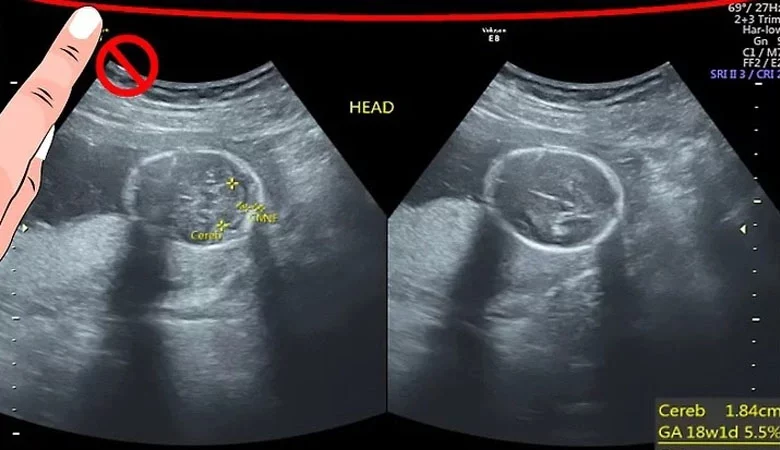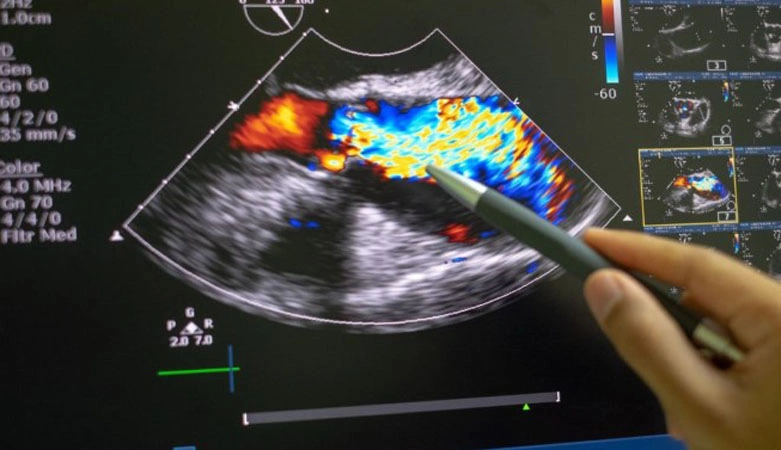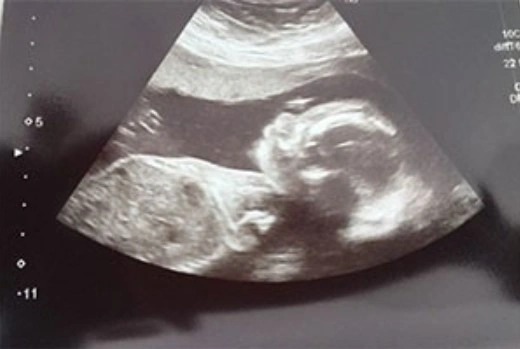What Do the 3 Lines on A Pregnancy Ultrasound Scan Mean?
- Baby
-
- UPDATED NOVEMBER 06, 2024

by Tasha Mayberry
410 shares
You’re probably thinking, “this pregnancy thing is all about lines, aye?”
Well, to be fair, that’s not exactly far from the truth. First, there’s the distinction between a one-line negative pregnancy test and that magical two clear lines for a positive result. And now this, another test that involves lines. What are the three lines this time?
There’s a longstanding belief that three white lines on ultrasound are a telling sign that you are expecting a little girl. In this article, we look into this claim to find out the truth behind it.
What is the most accurate way of knowing our baby's gender?
According to the NHS, an ultrasound scan is the standard test used to find out whether your baby is a boy or a girl. In the UK, this scan often happens on your second lot of routine pregnancy ultrasound scans, at the 18 to 21-week pregnancy mark.
It is important to note that your second routine scans are not specifically for gender identification. In fact, its sole purpose is determining the development of your baby’s overall anatomy. Specifically, these scans will look closely at your baby’s heart, brain, bones, spinal cord, face, abdomen, and kidneys.
This doesn’t mean they won’t assess your baby’s genitalia on purpose. They do, but mainly to assess for development. Determining the baby’s gender is just a bonus for parents.
While you may be excited to know your baby’s gender, some parents want the gender as a surprise, until the actual birth. For this reason, sonographers often will not tell you the gender, unless you specifically ask for it.
Some public hospitals also enforced policies of not informing the parents of the baby’s sex. In case this is your local hospital’s policy, you may want to get another ultrasound scan privately to determine your little one’s gender.
BUT the NHS emphasises that determining the gender in sonograms (another word for ultrasound) is not always 100% accurate. A lot of factors account for this inaccuracy, including your baby’s position during the scan.

So what are the three white lines on an ultrasound that a lot of parents are talking about?
As we said earlier, sonographers do look into the genitalia. Now the scan can’t zoom directly into this, so the sonographers often inspect, assess, and analyse the scan from the angle of your baby’s thighs. In short, they look at what is lying in between those thighs.
The theory is that the three white lines between the foetus’ thighs denote the baby’s vaginal anatomy. The two outer lines supposedly represent the labia, and the middle line is the clitoris.
According to Jan Steward, an expert sonographer, these three lines are often the landmark’s that they look for to determine that your baby may be a girl.

Is the Three-Line Ultrasound Method Always Reliable?
According to a statement made by Professor Christoph Lees, an expert obstetrician, predicting gender using the three-line method isn’t always right.
For one, as we said earlier, your baby’s position during the scan may make identifying their body parts extremely challenging.
Another reason is these lines may not always be visible, which can be a result of the ultrasound scan quality. Not all ultrasound machines are the same, and some may be too old that the imaging quality is so poor.
One other reason is that your bladders may not have enough water to give the sonographer a perfect viewing angle of your baby’s gender. Yup, there was a reason for them advising you to drink a full 2 litres of water before you come for your scan.
Furthermore, according to experts from the Original Window to the Womb, a private ultrasound institution specialising in pregnancy ultrasounds, maternal weight also plays a role. They say that a heavier weight can affect the ultrasound image quality as well as difficulty in properly scanning through to the foetus.
As you can see, these are just some of the reasons sonographers are cautious would their statements whenever they tell you about the gender. You would often hear them say phrases like: “I think it’s a girl..”, “there is a higher likelihood it’s a boy..”, or “I am leaning towards your baby being a girl..” or some other statement to that effect. You will rarely hear them use the words “sure”, “certain”, or “absolute”.
Our Final Three Lines:
- The ultrasound scan is not 100% reliable in pregnancy and all other medical diagnoses. Keep in mind that although the gender revealed to you by the sonographer may likely be accurate, be prepared for that small and rare possibility that it isn’t.
- Your second ultrasound scan, or the one done on the 18 to 21-week mark, is all about your baby’s development. While it’s great to know your baby’s gender, don’t dwell on this too much that you forget to ask the other important questions. Remember, a healthy baby is what you want – regardless if it turns out to be a boy or a girl. Ask about your baby’s other body parts. Most sonographers are accommodating and are great at explaining the ultrasound images as they do their scans.
- Listen to instructions and the advice of your healthcare providers. Maintain a healthy weight. Drink 2L of water before coming in for your scan. Before booking your scan, ask the institution if you are allowed to know the gender. On the day of your scan, inform your sonographer whether you want to know your baby’s gender or not.

So that’s our take on the three-white line ultrasound prediction method, often talked about in pregnancy circles.
We wish you a healthy pregnancy and delivery, and most of all, a healthy baby – whatever the gender may be.
References: